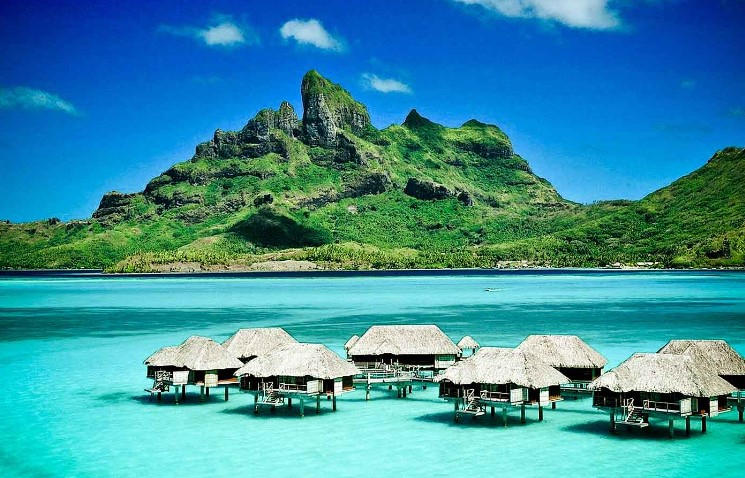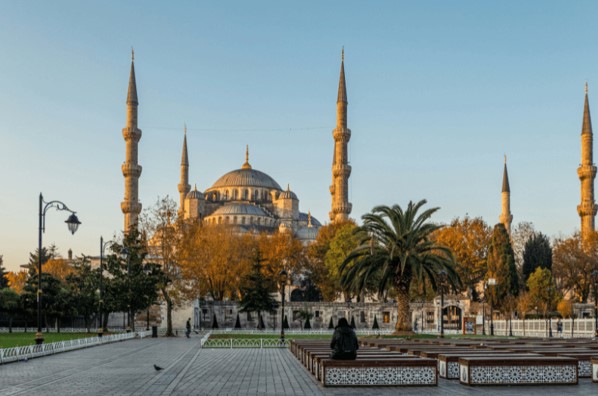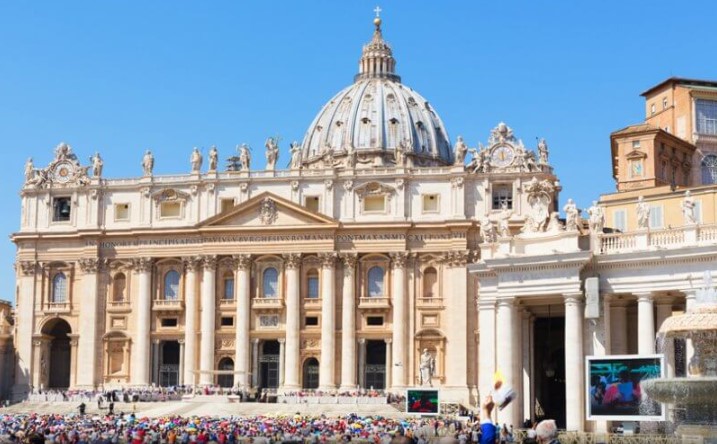For over a century, the destiny of this island paradise has been in the hands of outsiders. Now native Hawaiians are reclaiming their culture, language and land.
It’s known as the Seven Mile Miracle. The famed North Shore of Oahu, Hawaii, is home to some of the world’s most iconic surf breaks.
Every year, the North Shore plays centre stage for an epic battle between the world’s best surfers for the sport’s most coveted crown, the Pipeline Pro.
But just beyond these fabled sands, another battle is being waged. It’s a fight to keep Hawaii Hawaiian.
Under swaying palm trees in the quiet streets behind Sunset Beach — Paumalū to the locals — Pomai Hoapili is holding on to a slice of paradise that has been in his family for generations.
Pomai grew up here in a small home, set between the roaring ocean and the green Hawaiian hills, with Pipeline and Sunset on his doorstep.
“I live in the middle of these two super famous waves that people make pilgrimages out to, to come and catch a few waves,” he says.
But Pomai is an increasing rarity on Hawaii’s North Shore — a native Hawaiian.
As property prices soar, many native Hawaiians — or Kānaka Maoli — are being squeezed out, unable to keep pace with crippling property taxes and skyrocketing rents.
The pandemic has only made the problem worse, pushing prices to record highs as mainlanders from the US look to Hawaii for an island bolthole.
Just down the road, the so-called “Quiksilver house” on the beachfront at Pipeline sold last year for $US5 million, more than double the price it last changed hands for, in 2009.
For Pomai, who works as a lifeguard for the famous Hawaiian Water Patrol, staying on the North Shore is about more than holding on to the family home.
It’s about maintaining a connection to Hawaiian culture, which has revolved around surfing and the ocean since Hawaiians took to the waves on wooden boards hundreds of years ago.
“I want to be a Hawaiian on Hawaiian land,” he says.
“We’re lucky to be able to pull it off, you know. But it’s definitely not easy. Living in Hawaii, staying in Hawaii, you gotta hustle. It’s not an easy thing.”
Like many Hawaiians, Pomai feels a sense of pride that these islands gave surfing to the world and continues to produce world champions like Carissa Moore.
But the growth of surfing into a multi-billion-dollar global industry has also helped transform the sleepy North Shore into one of the most desirable postcodes on the planet.
“It’s pretty well overrun,” he says. “Surfing’s taken up a huge chunk of housing and resources on the North Shore, as well as waves.”
Many of the original homes have been flattened to make way for modern mansions.
Locals who sell up often end up buying on the US mainland, where properties are more affordable and they can live in relative comfort.
Los Angeles County is now home to more native Hawaiians than the island of Maui.
Pomai has seen others sell up, but once they leave, he says, “it’s hard to come back”.
“Somebody’s going to take your spot, guaranteed. People are fighting outside the door,” he says. “But this is home, so we’re going to stay, hold it down. There’s no other option.”
‘Premeditated theft’
For the Kānaka Maoli, the struggle to retain control of their land is a constant. It dates back over a century to when the Kingdom of Hawaii was illegally overthrown.
“We are our own country,” says Pomai. “There is no annexation treaty [with the US]. We are actually our own sovereign nation illegally occupied by the United States of America.”
On January 17, 1893, a group of American fruit and sugar plantation oligarchs launched a coup against Queen Liliuokalani, putting her under house arrest inside Iolani palace.
At first, the United States of America didn’t endorse the coup, but in 1898 it annexed the Kingdom of Hawaii and administered it as a US territory until 1959, when Hawaii became the 50th US state.
“This is a theft — premeditated, systematised theft,” says Kalehua Krug, a Hawaiian charter school principal and community leader.
“They took it from our chiefs. They took it from the royalty. They took it from all of our families.”
Kalehua is among a generation of Hawaiians committed to the rebirth of native Hawaiian culture.
His school teaches the Hawaiian native language – which nearly went extinct after generations were discouraged from speaking it – as well as traditional hula dancing, alongside the mainstream school curriculum.
“When you give the culture and ceremony and language to them at a young age, they don’t have to feel the loss like we did,” Kalehua says of his students.
“You know, they don’t have to take that punch in the gut that we had to take.”
Land seizure has been central to the US’s effort to control Hawaii, he says, “because land, you know, builds generational wealth, and they could control the resources”.
The land is no longer sustaining native Hawaiians, Kalehua says. People have been forced to turn to new ways to get by.
Soon after the US made Hawaii a state, a new kind of visitor followed – tourists.
A Time magazine article published in 1966 called it a “jet rush”, as the number of visitors arriving to the islands had doubled in recent years.
That jet rush never ended.
The Waikiki mirage
On Oahu’s South Shore, Waikiki is a bucket list destination for millions of tourists lured by its white sands and postcard-perfect sunsets.
But for many native Hawaiians living and working in the capital, Honolulu, the tourism idyll is little more than a mirage.
Peeling back Waikiki’s layers is Honolulu local Chris Kahunahana, a filmmaker who has lived here for much of his life.
Chris is one of an emerging group of indigenous artists challenging the postcard cliches about Hawaii on the big screen.
“Initially in the film industry, Hawaii was seen as Hollywood’s backdrop,” he says.
“It served as a beautiful location for a Caucasian hero. But the stories weren’t from here, they were just using here as an exotic location, one that’s prettier than Detroit, right?
“The world is starting to understand the value of authentic stories. They’re tired of the same old shit.”
Chris sees it as an artist’s job to “hold up a mirror to society and say, ‘Hey, look at this ugly picture'”. His acclaimed feature film, Waikiki – the first directed by a native Hawaiian – does just that.
Through its main character Kea – a woman living out of her car while balancing multiple jobs in the tourism industry – the film explores how hard it is for indigenous Hawaiians to get by in contemporary Hawaii.
Many of the issues the film raises stem from the separation of Hawaiians from their land, Chris says, which has cut off many from economic opportunities.
“And it’s because of this tourism industry – they’ve been selling this lie of Hawaii as a paradise.”
The demand for a piece of Hawaii is pushing some out. “Without Hawaiians, is it really Hawaii? It’s not,” says Chris. “The powers that be, they don’t give a shit.”
In 2019, more than 10 million visitors flocked to Hawaii, with most rubbing their toes on the sands of Waikiki.
Tourism is Hawaii’s biggest economic driver and accounts for 21 per cent of jobs in the state, but hospitality staff are among the islands’ worst paid workers.
Like the protagonist in Chris’s film, some live a precarious existence on on the edge of poverty, unable to secure stable housing.
Hawaii, he says, regularly tops the list of the US’s most expensive places to live, ahead of New York and California.
“At least in San Francisco, you have the tech industry; in New York, you have media – it’s f***ing New York!” he says.
“Unfortunately, the only jobs that they provide for people in Hawaii are tourism jobs.
“They are like servant jobs – you are providing them a service, entertainment, an experience – a cultural experience, right?
“They are not really interested in the real culture. They are interested in experiencing it as entertainment. It’s not back and forth, it’s not give and take – it’s just take, take, take, take.”
The result has been an epidemic of homelessness, a problem that disproportionately affects native Hawaiians.
Hawaii now has the third-highest homeless rate in the USA.
Half of the state’s homeless are native Hawaiian and Pacific Islander, despite only making up 20 per cent of the population.
According to Chris, they’re not really homeless, but “houseless”.
“The fact they can’t afford to purchase a house – [Hawaii] is still their home,” he says. “This is their home. They just don’t have a house.”
The west side divide
On Oahu’s west side, Makaha Beach is famed as the birthplace of big wave surfing, where waterfront apartments take in views of waves peeling around the point.
But Oahu’s fiercely beautiful west side is also where Hawaii’s homelessness crisis is most apparent.
All along the ribbon of the Farrington Highway, which skirts the coast on Oahu’s western shore, native Hawaiian flags flap upside down in the breeze, on porches and in shop windows.
It’s a sign of distress.
Also dotting the foreshore are makeshift homeless camps, where individuals and families live in makeshift shelters, trapped between two worlds.
Many have jobs, their children go to local schools, and life continues – they are indeed “houseless”.
With limited support from the state, one community is tackling the issue themselves and establishing a more permanent solution.
Houseless Hawaiians are living on the beaches of Oahu’s west side.
Foreign Correspondent: Matt Davis
Not far from the rolling waves of Makaha, behind rows of gleaming yachts in the Wai’anae Boat Harbour, is Pu’uhonua O Wai’anae, a permanent homeless camp.
Pu’uhonua means “place of refuge”. That’s what the camp’s founder and matriarch, Twinkle Borge, intends for people to find here when they fall on hard times.
Pu’uhonua O Wai’anae has existed beside the boat harbour for almost 20 years since Twinkle, herself homeless, set up camp on the beach.
“At the time there were about seven of us sleeping on the beachfront,” she says.
Since establishing the camp in 2004, Twinkle has transformed it into a more permanent home for around 250 people.
All members of the village are required to do community service – both inside the camp and in the surrounding public space – to keep the areas clean and safe.
John Isaac, 22, moved here four years ago, joining his parents who were already living in the camp.
“I was living on my own already,” he says. “But the house I was living in was getting evicted.”
John’s mother is full of praise for Twinkle, calling her “the head of the spear”.
“I’m not saying we are 100 per cent the solution,” Twinkle says. “But we are part of the solution.”
In her air-conditioned bedroom in the camp, Twinkle explains the daily challenges the community faces living here.
There is no running water, so water must be collected from public showers in the boat harbour. The camp is bathed in the constant whirr of generators to keep a limited supply of power on.
“We don’t have that privilege of going in and turning on our lights, flicking that pipe to turn on our water,” she says. “Yeah, here we bring in our own waters. We have generators.”
But Twinkle and her inner circle have hatched a plan to change this – a plan for a slice of land to live on.
Taking back the land
In the long, green valley that stretches inland from the boat harbour, Twinkle is beaming with pride.
“For the last five years I kept telling people, ‘This is going to be our home’,” she says. “Five years I passed this gate and said, ‘that is our home’.
“Well, this is our home. We are here.”
Through a mix of donations and grants, Twinkle has bought a 8-hectare plot, which she has named Pu’uhonua Mauka.
It will be a permanent home for for many displaced in their own land.
“It is amazing. I never thought I would be doing the things that I am doing today. I am able to help my family, you know, to be a little bit more productive,” she says.
“The plan is building out our homes, bringing up people home, try to work towards being self-sustaining. And guess what, they all going to get running water!”
For Twinkle, her reward is seeing the next generation break the cycle of dispossession.
“My pay day is when my kids bring me home their diplomas,” she says.
“It might be a big sacrifice for me, but at the end it will be a reward – to see the accomplishment, to see the cycle that they are breaking, for their family. Yeah, yeah, that’s pay day.”
A cultural rebirth
For Pomai Hoapili, life is best lived in a state where “everything seems like surfing, or like flowing. That is the ultimate goal,” he says,.
At his home on the North Shore, he’s also focused on nurturing the next generation.
His 10-year-old daughter Wela is enrolled in a school that teaches the Hawaiian language. Pomai is also taking classes so they can speak to each other in Hawaiian as much as possible.
It’s already bridging the generational divide. When Wela first spoke Hawaiian to her great grandmother, the old woman wept with joy.
“My grandma starts crying, sits down and cries a little bit,” Pomai says.
“They took it away in three generations. We’re going to get it back in one. Whatever it takes.”
He believes Hawaiians are in the midst a cultural renaissance, if only those still calling the islands home can withstand the pressures forcing them out.
“Be Hawaiian, speak Hawaiian, live Hawaiian,” he says.
“The longer you stay alive, the longer people remember we’re here. But if we stop down the line, people stop talking about us, we disappear. So, we got to keep practising.”
Watch ‘Keep Hawaii Hawaiian’ on Foreign Correspondent tonight at 8pm on ABC TV, iview and streaming live on Facebook and YouTube.
Credits
- Photography, video and reporting: Matt Davis
- Additional drone: Allen Murabayashi @oahusurf
- Digital production: Matt Henry




More Stories
Beach Volleyball falls to Long Beach State in Big West Championship
Hawaii’s Hill, Long Beach State’s Valenzuela eager to match wits
Hawaii blocks some Waikiki sands for seal pup